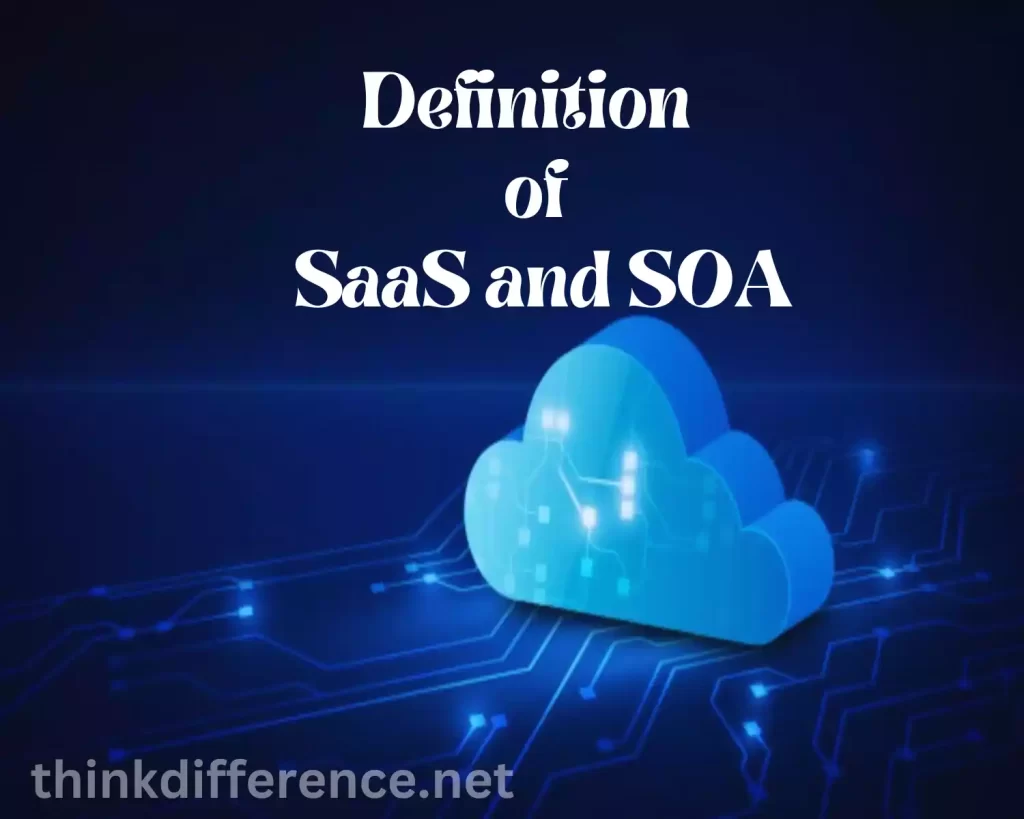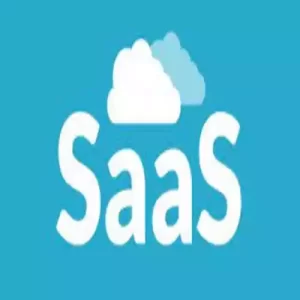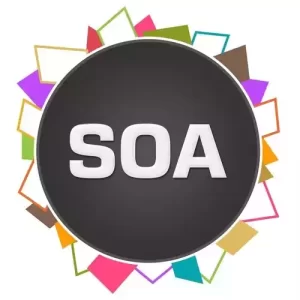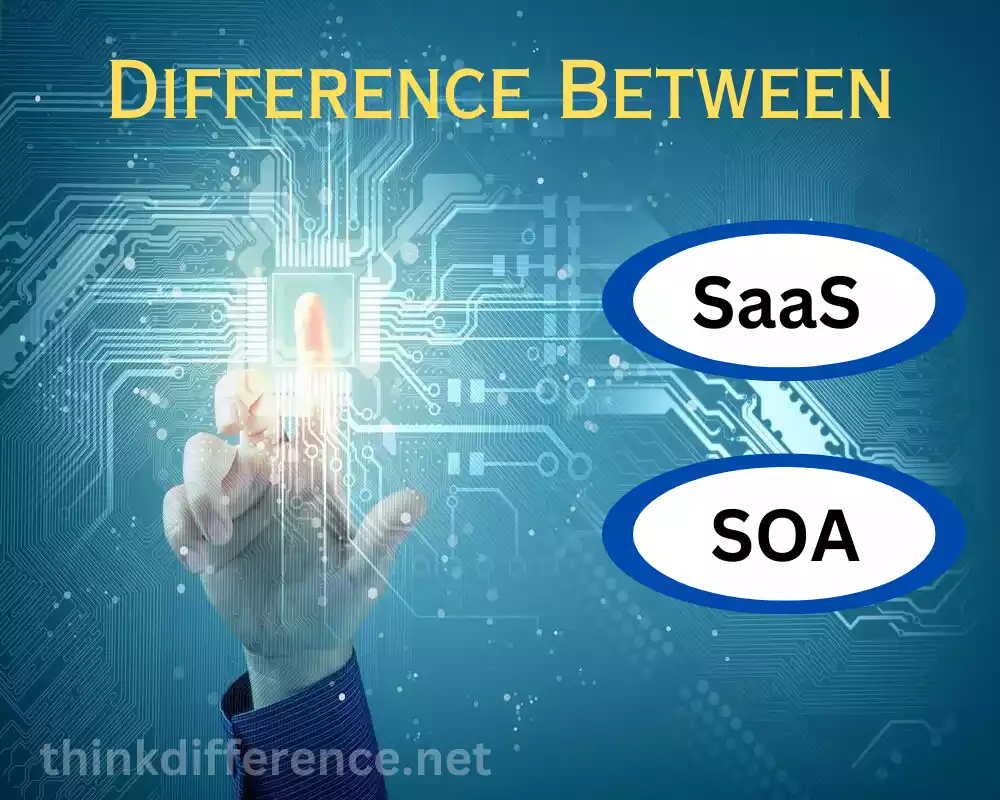Definition of SaaS and SOA
SaaS: Cloud computing refers to an approach in computing in which resources are made accessible via the Internet and offered as cloud services – often highly visual or extensible solutions like SaaS (Software as a Service). SaaS (Software as a Service) is one form of cloud computing and serves several clients at once by providing software resources over the cloud platform. Utilizing the “one-to-many” model, multiple clients share one application.
SaaS users can take advantage of SaaS by sidestepping the hassles and requirements involved with installing and updating software themselves; SaaS software runs directly on an outsourced provider’s server instead. Providers assume full responsibility for the security, performance, and availability of applications delivered over internet browsers to millions of users via multitenant architecture designs.
The cost of maintaining single applications is reduced as providers only need to pay upfront licensing. Examples of SaaS include Salesforce.com Workday Google Apps Zogo Office and other similar solutions.

SOA: SOA (Service-Oriented Architecture) is an architectural model in which solution logic is represented as services. SOA strives to become more cost-efficient, agile, and productive by using services as its main method for providing solutions – this helps businesses realize the advantages associated with service-oriented computing and principles. SOA implementations typically utilize many technologies, products, APIs, and extensions that work together seamlessly.
At their core lies service orientation; services created using SO can exist independently but remain interlinked within an SOA implementation. Though certain services share features and standards, their modifications and expansion are independent of each other; by combining services you may create completely new services!
Each of them is only aware of each other through service descriptions; thus being loosely coupled. Services communicate by using intelligent messages with self-governing logic to self-govern. Loose coupling and service contract are two essential SOA design concepts; others include autonomy, abstraction, reusability composability statelessness discoverability reusability of components composability reusability
Importance of understanding the difference Between SaaS and SOA
Understanding the differences between SaaS and SOA is paramount, particularly from a security perspective.
- Clear decision-making: Knowledge is power when it comes to making informed decisions, so by exploring SaaS and SOA, businesses can make educated choices regarding software deployment based on their requirements and needs.
- Software Acquisition: Understanding the differences between SaaS (Software as a Service) and SOA can assist organizations with making an informed decision when procuring software solutions; whether prebuilt SaaS solutions should be chosen or custom-developed software with SOA methods should be chosen – helping assess costs, timeline, feasibility considerations as well as feasibility of each approach.
- Application integration: As part of integrating applications, it is critical to comprehend the differences between SaaS (Software as a Service) and SOA to effectively align technology with business processes while guaranteeing smooth interoperability and data exchange.
- Customization and Scalability: Being knowledgeable of the differences between SaaS applications and SOA helps determine your level of customization and scalability options, such as limited customization on SaaS apps vs more customizable SOA options with greater scalability for meeting business requirements.
- Vendor evaluation: As part of your evaluation of vendors and service providers, you must distinguish between SaaS (Software as a Service) and SOA providers to accurately evaluate their service models and architectural approaches to align with your organization’s goals and ensure compatibility between services provided.
- Security and Data Privacy: Understanding the differences between SaaS (Software as a Service) and SOA helps organizations assess both approaches in terms of security and privacy concerns, which allows them to evaluate both levels of control over data as well as any compliance or regulatory compliance needs as well as potential risks involved with each one.
- Allocating Resources: Businesses can more efficiently allocate their resources by understanding the differences between SaaS (Software as a Service) and SOA, in particular their respective differences, requirements of expertise required, costs associated with each method as well as benefits that might come with taking one over another approach.
Understanding the distinctions between SaaS (Software as a Service) and SOA allows organizations to make more informed decisions regarding software deployment, architectures, integrations, customizations, scaling requirements, and resource allocation decisions. By aligning technology strategies with overall business goals it enables resource optimization while meeting specific requirements efficiently and cost-effectively.
SaaS(Software-as-a-Service)

SaaS (Software-as-a-Service), also referred to as Cloud Computing or Utility Computing is an internet delivery model where software applications are made directly available without being installed on users’ local computers or servers. Users access and utilize SaaS via web browsers or thin client interface rather than installing individual pieces themselves.
SaaS (Software as a Service) apps are hosted and maintained by an external service provider who handles infrastructure upkeep, software updates, and security as well as data storage needs. Subscription payments are typically payed monthly or annually versus upfront licensing agreements for SaaS apps.
SaaS applications can be created as multi-tenant apps, meaning multiple users or organizations can share an application while keeping their data separate from that of another client. Multi-tenancy also enables service providers to efficiently serve multiple customers from a shared infrastructure.
SaaS offers several advantages over traditional software deployment models.
These include:
- Easy accessibility: SaaS applications can be accessed remotely from anywhere with internet connectivity, giving users the freedom to work from remote locations while accessing data across devices and using applications across them all.
- Reduced upfront costs: SaaS applications typically offer lower initial investment costs as they’re paid per use rather than purchased outright.
- Scalability and flexibility: SaaS applications can easily meet expanding business needs. Users can often adjust their subscription plan as desired or add and remove users as necessary.
- Automated updates and maintenance: By outsourcing their software updates and maintenance needs to the service provider, users are relieved from unnecessary stress.
- Integration and deployment are simplified: SaaS apps are often designed with ease of deployment in mind, with minimal configuration or installation requirements. Service providers usually offer APIs or connectors to make integration with other SaaS or on-premises apps simpler.
SaaS applications have quickly gained in popularity across many industries, often being utilized to manage applications that support customer relationship management (CRM), human resource management (HRM), project management (PM), collaboration tools, and more.
SOA (Service-Oriented Architecture)

SOA (Service-Oriented Architecture) is an approach to software architecture that prioritizes organizing software applications into services that can then be combined to form new processes or functionalities for businesses and users alike.
SOA services, or service-oriented architecture (SOA), are self-contained modules of software functionality that can be accessed over a network and operate autonomously without impacting other services in any way. Updates do not affect them negatively either.
The main principles of SOA include:
- Service-oriented approach: SOA (Service-oriented architecture) is an approach that emphasizes services as the core building blocks for applications. Services are self-contained functional units that can be understood and accessed by other components within an SOA solution.
- Loose coupling: An SOA features services with loose coupling, meaning they have minimal dependence on one another and thus make changes more easily without disrupting architecture. Services may be created, modified, and even deleted without interrupting its structure.
- Interoperability: SOA fosters interoperability across different systems and technologies. Platform-independent services may communicate using standard protocols and interfaces like APIs and web services for communication purposes.
SOA provides several benefits, including:
- Reusability and Modularity: SOA services can be designed in such a manner to promote their reusability that services can be reused across different applications and processes, thus shortening development times significantly. Their modular nature makes updating them simpler than ever.
- Agility and adaptability: SOA provides organizations with agility and adaptability. Organizations can quickly respond to changing business requirements with orchestrated services that create new processes or modify old ones without extensive redevelopment costs – thus providing increased adaptability in response to shifting requirements. This flexibility enables greater adaptability and responsiveness as business needs shift over time.
- Integration and interoperability: SOA provides organizations with an effective means for seamless integration between various systems and applications, services can easily be integrated to form composite apps which combine functionality from multiple services; thereby helping organizations integrate systems both inside their organizations as well as outside. This provides companies with greater scope in connecting different technologies within or beyond the organization’s boundaries.
Implementations of Service-Oriented Architecture can include employing an Enterprise Service Bus as a middleware between services. Web services or APIs could also be employed to expose services directly to consumers as well as create service registries.
Differences Between SaaS and SOA
Here are the main distinctions between SaaS and SOA:
1. Focus and Scope:
- SaaS is an emerging software delivery model focused on offering software applications ready to use to clients as a subscription-based service.
- SOA (Service-oriented architecture) focuses on designing and organizing services. This architectural approach creates loosely coupled, modular services which can then be combined into flexible systems that offer increased scalability.
2. Delivery Model:
- SaaS (Software as a Service) is an Internet delivery model in which software applications are managed and hosted by service providers; users access these applications through thin client computers or browsers via the Internet.
- SOA is a flexible design approach that can be implemented into different delivery models including hybrid, on-premises, and cloud environments. There is no one size fits all approach for deploying SOA environments.
3. Ownership and Control:
- SaaS (Software as a Service) allows organizations to offload responsibility for maintaining software applications to third-party providers who maintain, update and secure them.
- SOA provides organizations the means of keeping ownership over their services, including creating, managing, and governing them through SOA architectures.
4. Dependencies:
- SaaS applications do not rely on external services for functionality and are completely independent of one another, providing full functionality to end users.
- SOA functionality rests upon the dependencies and interactions among services within it, with loose coupling between individual services enabling orchestrated business process execution.
5. Reusability:
- SaaS applications tend to be built specifically for one use case and not with reuse in mind.
- Service-oriented architecture (SOA) encourages this practice by designing its architecture so services may be reused across applications or processes.
6. Customization and Flexibility:
- SaaS applications tend to have limited customization features due to serving an entire user population.
- While SOA services allow greater personalization and flexibility by being configured and developed according to individual business needs.
7. User Interaction:
- SaaS applications can be accessed using either a web browser or a thin client interface.
- SOA (Service-oriented architecture) focuses on interoperability among services without direct user involvement; instead it emphasizes backend integration and interoperability as its goal.
SaaS applications and SOA architectures can work hand in hand to achieve maximum benefit from both. SaaS apps may even be integrated within SOA architectures to maximize both sets of benefits.
Use Cases and Considerations
Use Cases for SaaS:
- Customer Relationship Management: SaaS CRM solutions like Salesforce provide organizations with an encompassing platform to effectively oversee customer interactions, sales processes and data storage needs.
- Human Resources Management: Cloud-based HR software like Workday or BambooHR offers features to manage employee data, recruitment, and onboarding processes, performance evaluation as well as other human resource tasks.
- Collaboration and Communication: Software-as-a-service tools such as Microsoft Office 365 and Google Workspace enable teams to work simultaneously on documents, communicate using chat or video conferencing, and instantly share files between members.
- Project Management: SaaS tools like Asana and Trello make task management, team collaboration, project planning, and progress tracking more straightforward than ever before.
- Financial Management: SaaS financial management software like QuickBooks Online or Xero can assist businesses in overseeing invoicing, expenses, and payroll more easily.
Use Cases for SOA:
Integration of Legacy Systems SOA allows legacy systems to be effectively integrated within an organization for increased communication and data sharing.
- Composite Applications: SOA allows developers to develop composite apps by integrating services from various providers into one application with an improved user interface and business functionality.
- Business Process Automation (BPA): SOA provides the framework necessary for orchestrating and integrating services, systems, and applications that improve workflow efficiency by streamlining workflow processes.
- Service-Oriented Architecture (SOA): Organizations may employ SOA in developing new systems and applications by employing design techniques that employ services that are easily reused across them.
Considerations for SaaS:
- Data Security: Organizations should evaluate the data protection and security practices implemented by SaaS providers to guarantee the confidentiality and integrity of the information stored.
- Data Sovereignty and Compliance: When choosing their SaaS service provider, organizations should take note of data residency requirements and regulatory compliance as this will ensure their data is processed by any relevant laws or regulations.
- Vendor Lock-in: Migrating from one SaaS provider to the next can be complex due to integrations, customizations, or data migration needs. Therefore it’s wise to carefully examine their exit strategy and data portability options before choosing their SaaS services provider.
Considerations for SOA:
- Governance and Service Management: SOA implementation necessitates appropriate governance and service management practices to guarantee consistency, quality, and lifecycle management.
- Service Design and Standards: Organizations must establish principles, standards, and protocols to guarantee interoperability and continuity among their services.
- Skill Set and Resources: To effectively design, develop, and administer services it may require specific skillsets and resources.
- Infrastructure and Integration: SOA implementation often relies on middleware like Enterprise Service Buses (ESB) for communication and service integration purposes, while organisations must consider both infrastructure requirements as well as integration abilities when planning implementation strategies.
SaaS can bring both advantages and drawbacks to an organization’s operations, organizations must assess their individual requirements, goals and constraints when choosing between SaaS or SOA solutions.
Conclusion
SaaS and SOA are two transformative technologies that have reshaped the way businesses operate in the digital age. With their unique advantages and potential for innovation, they have become indispensable components of modern business strategies. Embracing SaaS and SOA can enable businesses to stay competitive, agile, and resilient in an increasingly dynamic market.



